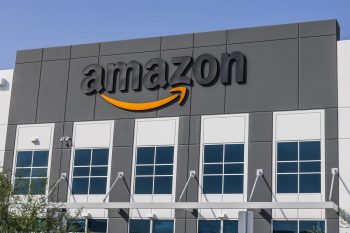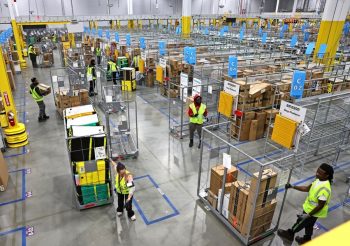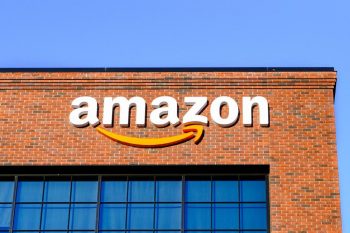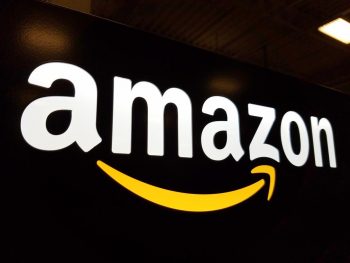
Amazon, a global tech giant, has been a significant employer in the U.S. and around the world. However, recent trends show a slowdown in its hiring rate, sparking questions and concerns. This article aims to delve into these trends, providing an in-depth analysis of why Amazon is not hiring as much as it used to.
Amazon’s hiring rate has slowed down due to several factors. Economic conditions, labor market competition, and high turnover rates have impacted Amazon’s hiring decisions. The COVID-19 pandemic led to an initial hiring spree, but as the surge in online shopping slowed down, so did Amazon’s hiring. Technological solutions that reduce the need for human employees and a corporate hiring freeze have also contributed to the slowdown. However, this doesn’t necessarily indicate a shift in Amazon’s business strategy or priorities.
Economic Factors Influencing Amazon’s Hiring
Several economic factors have influenced Amazon’s hiring decisions. These include global economic conditions, unemployment rates, interest rates, demographics, labor market competition, and high turnover rates.
During periods of economic prosperity, consumers typically have more disposable income, increasing sales. However, during a recession, consumers may reduce non-essential spending, affecting Amazon’s profitability. High unemployment rates can decrease consumer spending power, reducing demand for non-essential products and services. On the other hand, low unemployment rates can increase consumer confidence and boost spending.
In addition, Amazon is facing growing competition for workers amid wage inflation, leading to challenges in recruitment and retention. The company has responded by raising wages and pledging to improve its workplace. However, Amazon continues to face challenges in recruitment and retention as labor competition grows.
Impact of COVID-19 on Amazon’s Hiring
The COVID-19 pandemic significantly affected Amazon’s hiring processes and policies. Due to the surge in online shopping during the pandemic, Amazon went on an accelerated hiring spree, bringing on about 2,800 employees a day, mostly in its warehouses, starting in July 2020. The company’s global workforce increased by almost 75% during the pandemic to help keep up with the high demand.
However, Amazon’s hiring spree has slowed down recently as the company looks to curb expenses amid slowing demand and rising costs across its business. The company’s direct workforce declined by 99,000 employees from the first to the second quarter, primarily due to attrition in Amazon’s fulfillment and distribution network.
Technological Solutions Reducing the Need for Human Employees
Amazon has implemented several new technological solutions that have reduced the need for human employees. These include Ernie, a robot designed to help employees handle packages more safely, Autonomous Mobile Robots (AMRs), pinch-grasping robots, Proteus, and the Amazon Robotics Identification system. These technologies have the potential to reduce the need for human employees, but Amazon maintains that robots and people will continue to work together inside its warehouses.
Amazon’s Hiring Freeze
One of the significant shifts in Amazon’s hiring policy was the institution of a corporate hiring freeze. The main reasons for this were the uncertain economic environment and the rapid hiring that the company had been undergoing in previous years. The freeze allowed Amazon to reassess its workforce needs. It is worth noting that the freeze did not affect positions in Amazon fulfillment centers, as the company continued to ramp up for the holiday season.
Conclusion
While Amazon’s hiring rate has slowed down, this does not necessarily indicate a shift in the company’s business strategy or priorities. Amazon continues to focus on customer-centricity, innovation, corporate agility, and optimization. The recent hiring challenges may pose some difficulties for Amazon, but they may also reflect the need for the company to adapt its recruitment and retention practices in response to a tight labor market and growing competition for skilled workers.
In the end, Amazon’s hiring trends reflect the realities of a dynamic global economy and labor market. As such, they offer valuable insights into the challenges and opportunities facing one of the world’s largest and most influential companies.
Frequently Asked Questions
What is Amazon’s current headcount?
As of the second quarter of 2021, Amazon’s global workforce stood at approximately 1.3 million people.
What is the Amazon Robotics Identification system?
The Amazon Robotics Identification system is a technology that uses machine learning to automatically identify and sort items in Amazon’s warehouses. It aims to improve efficiency and reduce the need for manual labor.
What is wage inflation?
Wage inflation refers to the rising cost of labor, typically due to factors such as increased demand for workers, higher living costs, or regulatory changes like increases in the minimum wage.
How has Amazon responded to wage inflation?
Amazon has responded to wage inflation by raising its minimum wage to $15 per hour in the U.S., and pledging to improve its workplace culture and practices. However, the company continues to face challenges in recruitment and retention due to competition in the labor market.
Has Amazon’s hiring freeze affected its fulfillment centers?
No, the hiring freeze did not affect positions in Amazon’s fulfillment centers. The company continued to hire in these areas to meet demand, especially during the holiday season.










